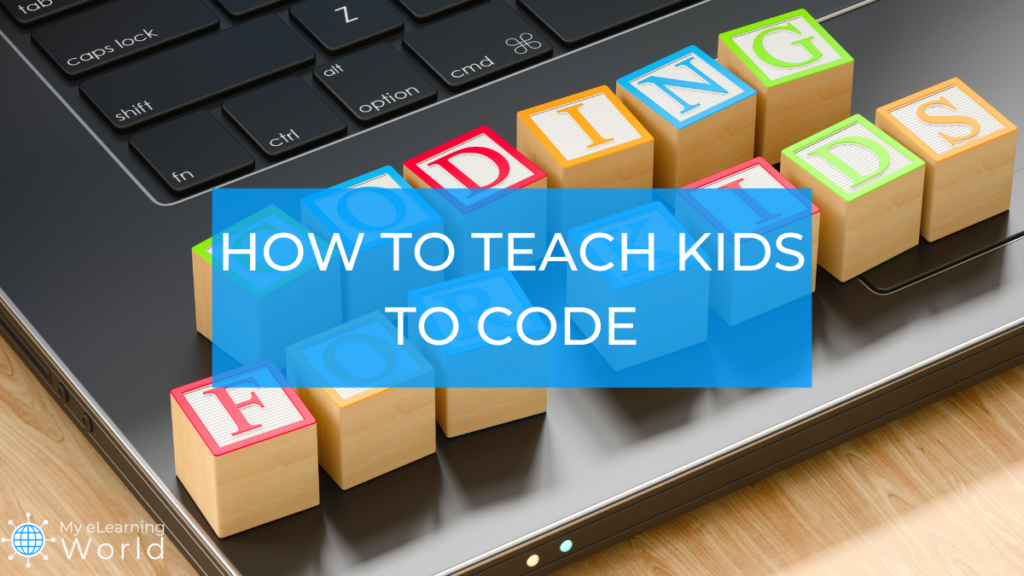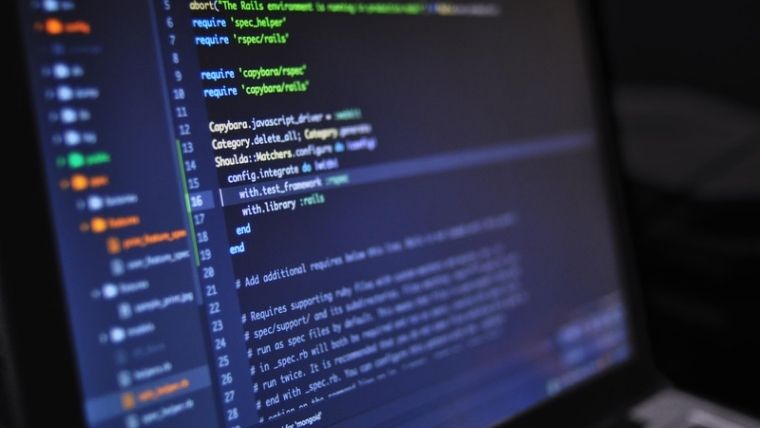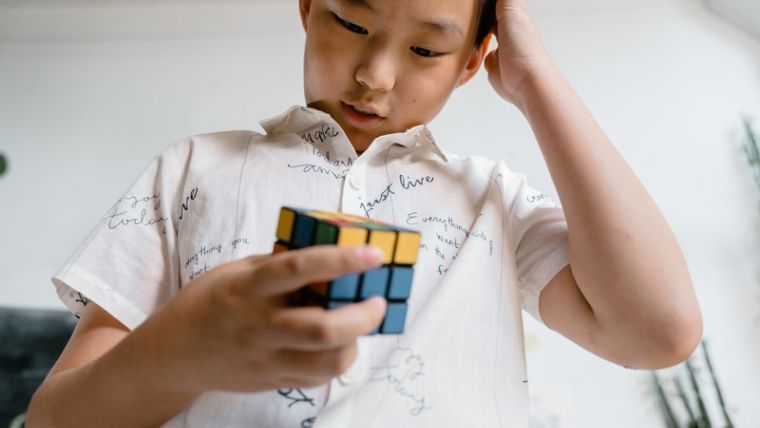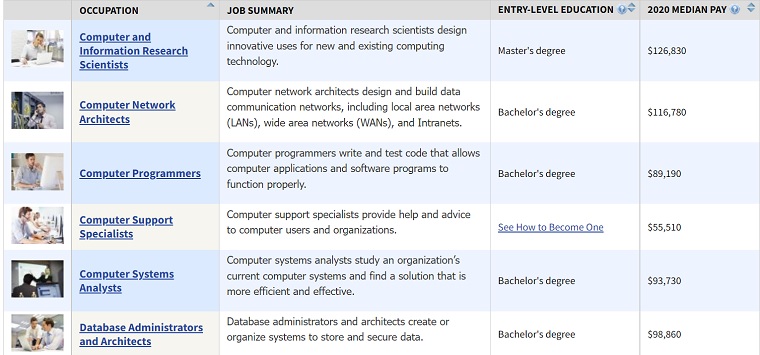Teaching kids to code is one of the best ways you can set them up for success in life.
Not only are programming jobs in high demand now and into the future, but learning how to code also helps kids develop problem-solving skills, creativity, math competency, and a whole lot more.
But how can you teach kids to code…especially if you don’t know coding yourself?
The good news is that there are plenty of resources available that make it easy to start teaching kids coding.
The following article will serve as a complete guide on how to introduce coding to your kids, including tips for teaching kids to code, useful resources that will help in your journey (including fun coding apps like codeSpark), and a whole lot more.
Disclosure: Some of the links in this article are affiliate links, meaning at no additional cost for you, we might get a commission if you click the link and purchase.
What Is Coding?
Coding is a means of communication with the computer. It is through coding that programmers communicate with computers and machines about tasks that need to be performed.
Programming languages like Java or Python are used by programmers to write executable scripts that make up the creative process.
Coding is what makes the applications run on your smartphone, the games you play on your consoles, your websites, and social media platforms work.
Programming language can also be in the form of visual drag and drop, which makes up for most of the beginner coding lessons for your kids. This allows kids to learn in an entertaining way through visuals instead of texts and scripts.
11 Tips On How To Teach Coding To Kids
Now that we are well-acquainted with what coding is and the potential of this skill in our kids’ education, let’s go through the following tips so you will get a better insight about all the nitty-gritty details of coding.
1. Use coding apps like codeSpark
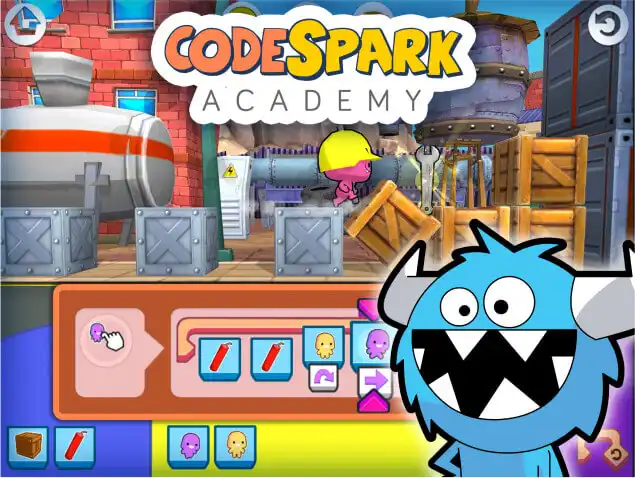 codeSpark Academy
codeSpark Academy
codeSpark is a fun, engaging coding app that teaches kids basic problem solving, critical thinking skills, creativity, and a host of other valuable skills. Kids will enjoy playing on the app, not even realizing how much they're learning along the way as they get prepared for the world of tomorrow.
It is true that programming is an intellectual skill that does not come from simply reading books. Even after learning about it can be intimidating to sit down in front of a blank editor and start a new program after learning about variables, loops, and functions.
Using an app like codeSpark Academy, kids can learn to code even before they know how to read.
By making it fun to learn coding fun through exciting games and activities, kids stay more engaged and start building valuable skills.
The app is incredibly easy and intuitive to use. Your little ones will be able to use it and start learning coding basics with minimal guidance required from an adult.
codeSpark is also specifically designed to increase girl engagement in STEM and close the gender gap. The ability to stretch limits, persevere, and stay curious requires confidence.
codeSpark provides confidence to kids to be fearless learners. It is the perfect activity for anyone who wants to start learning how to program by taking baby steps.
For all of these reasons, it’s one of our favorite educational apps for kids and one of the best ways to start teaching kids coding.
Click here to try codeSpark free for 7 days.
2. Choose a visual coding language
Teaching kids coding has become easier using gamification. Games with “wins” reward children, are visually entertaining and make them feel like they’re playing rather than working.
Choosing a visual language is crucial. Coding for kids also requires visual learning.
Most children cannot learn from only words on a page or on a screen, so the best textbooks include illustrations.
The world of computer programming has evolved beyond looking at lines of code. When students can see the effect of a change they make on their favorite Apple or Android device, coding becomes much more concrete.
3. Start with a small task
Video games, movies, robots, and more are all derived from programming, and children have just learned about it, ready to create their next Candy Crush. It is certainly possible, but maintaining realistic expectations is important.
It is best to start with simple coding projects and gradually introduce more difficult tasks as students’ coding skills develop. Educating kids on basic design and problem-solving concepts and explaining how these skills will lead to their ultimate goals.
These types of activities are great for kids who want to take small steps towards learning programming; an hour of coding per day is enough to continuously enhance their skills.
4. Allow failures to develop resilience
It is important for kids to learn and grow by trying new things and failing. This is part of the process of learning how to code, and it is critical for students to understand this concept.
Encourage them to experiment with different approaches and not be disheartened if something does not work out as planned.
Learning to write code teaches kids to be resilient and to approach problems with a different mindset.
It also helps them develop the perseverance they need to become successful in their future endeavors.
5. Build upon the small achievements
After the students have taken a first step in the pool with a starter project, it is time to build on their success. The accomplishments a child makes are both stepping stones and accomplishments. It is important to celebrate the accomplishment and to find ways to continue it.
For instance, a project’s scope can be expanded. Children could make a countdown timer that counted down to their birthdays and all of their friends’ birthdays as well. Enhancements can sometimes be as simple as adding a personalized logo to a generic project. This is one way of teaching kids to code.
6. Connect coding topics to other subjects
Connecting computational thinking to subjects students are already studying is important. Because computational thinking is an innate process, it is important to teach it in the classroom.
While playing with blocks and games and interacting with the world around them, children learn patterns, hypothesize, and apply them to other subjects besides STEM, such as ELA, reading, and the arts.”
Additionally, STEAM mindsets can be used to teach subjects outside of STEM, such as ELA and reading. Students gain a deeper understanding of each subject when STEAM and coding are integrated with different content areas.
7. Develop your own technology literacy
Technology literacy describes the differences between it and other types of literacy, and the importance of it for students’ success today. A problem-solving approach instead of researching information, checking facts, or knowing what tool to use is what distinguishes it from information, media, and computer literacy.
Technology literacy is defined as:
- The ability to think critically
- Basics of applications
- Ability to solve problems
- Being a technology creator
In an increasingly technologically driven environment, students will need to be better able to obtain, evaluate, manage, and communicate information than ever before.
8. Don’t stick to a single language
The ease of learning some languages makes them attractive options for first-time programmers. Learning to code shouldn’t be random; it should be guided by a passion, and identifying that passion early will allow students to align the process with their passion.
Anyhow, mastering a particular language’s syntax shouldn’t be the goal. Rather than teaching programmatic thinking, the focus should be on developing critical thinking and problem-solving skills.
Once one language is learned, one doesn’t have to learn another. The same skills and concepts are used across almost all languages. The fundamentals matter more than the language itself.
9. Structure the content in an easy-to-understand way
Gradually fostering a pupil’s ability to learn on their own is scaffolded material. The tools and the organization in the lessons decrease as you progress through them.
Coding schools that use this technique also add higher levels of content-learning progression starting with computational thinking, moving on to Scratch step-by-step directions, and eventually moving to JavaScript.
In the early grades, Mitra said, “Make sure their learnings translate into solid foundations for more advanced topics.”
You should promote their interest in a wide range of subjects and allow them to do more difficult tasks. Progress allows pupils to set new goals and achieve milestones.
10. Check out YouTube channels for coding
The internet offers a wealth of high-quality resources for learning how to teach kids everything from coding basics to advanced concepts. There are so many channels dedicated to teaching kids to code on YouTube that it is one of the best places to get lessons.
There are, however, some television channels that are better than others. Several of these tips and tricks are great for novices, but some may not be so useful.
YouTube has a number of movies aimed at beginning programmers. You can also find lessons for beginners in Java, Python, and C++. C programming tutorials are among the materials, which are considered the best instructions available to learn the language.
Yogesh Patel owns the ProgrammingKnowledge blog as well as a YouTube channel. Anyone interested in learning to code will find this channel one of the first channels they should bookmark since it has a great deal of beginner-friendly videos (over 1,000). More than 150,000 people are subscribed to ProgrammingKnowledge.
At Learn Code Academy you will be guided through topics such as JavaScript and jQuery. Stern’s trailer, which offers job advice for web developers, is one of the channel’s most popular videos.
11. Make a self-paced curriculum
Students may go through challenging areas at their own time using a self-paced, adaptive learning program. Keep track of particular milestones and objectives. Allowing a pupil to spend more time on loops now will enable them to succeed with more complicated ideas in the future.
It shouldn’t feel like you’re in a typing lesson; instead, interact with the students as you would in any other class.
“Have students make decisions, especially innovative ones, while they’re learning to code,” Dodge said. “If students can see the immediate influence of their actions in their games and applications, you’ll have a more engaged, motivated student who is more likely to remain with it instead of complaining that it’s dull.”
Why is Teaching Kids to Code Important?
Learning coding at an earlier age assists in mastering the skill early on and the other skills it is associated with it. Children who start coding are exposed to different perspectives and get in the habit of problem-solving.
Here are 5 good reasons that teaching kids coding is so important.
1. Instills a problem-solving and logical approach
A programmer needs to identify and analyze the problem, come up with effective solutions and then test those solutions, evaluating and repeating the process if necessary. Kids are taught to break down the coding problems into smaller problems to write functional steps. This skill goes a long way in logically breaking down problems to solve them.
2. Empowers kids to be creative
Coding provides infinite opportunities for children to explore and discover new things and platforms. Teaching your kids to code means giving them the outlet to properly express and experiment with their creativity, whether it be in the form of animations, software, games, or website.
3. Teaches confidence and patience
Coding requires a lot of trial and error, a slight mistake in placing a semicolon and the code becomes invalid. Kids learning to code, also learn to be patient throughout the process. It takes confidence to write long codes not knowing if it will run and going through multiple rounds of bug fixing to get to the final product.
4. Encourages understanding of the world
Teaching kids to code helps them understand the world better. It allows them to break down and view the processes of the modern world and get an idea of what is happening around them.
Procedural Literacy is deemed as a vital skill of the 21st century. Mike Resnick from MIT explained this as ‘when you learn to code, you start thinking about the processes of the world’. This skill is important to become and stay employable in the future.
5. Future Investment
Where the global economy is digitalizing, it is important to start thinking of your children’s future. All the business functions, from finance and marketing to HR are now deeply integrated with technology.
According to data from the Bureau of Labor Statistics, here are the average salaries for a few jobs that require coding skills:
- Software developers: $110,140
- Computer programmers: $89,190
- Database admins and architects: $98,860
- Web developers: $73,760
- Network and computer systems administrators: $84,810
For the sake of comparison, the national average for all occupations is around $40,000, so the extra earnings one can get by learning to code are massive.
Programming languages are high in demand and even business graduates are expected to have some understanding of them. Coding is no longer a skill only for the tech sector.
Coding is now being regarded as an important life skill. It is also included as a part of the liberal arts curriculum. Where learning a human language was given importance, now with technology touching every aspect of our life, coding, communication with computers are also being given the same status.
Getting Started
What devices will you and the kid have access to?
If you are starting with younger kids, you can choose from a huge range of devices, as coding games and apps like codeSpark are easier to access. Tablets and laptops are both great devices for kids to learn coding basics on.
Do I need internet access to teach kids coding?
The availability of the internet will open doors to a ton of coding resources, including access to coding apps for kids, online courses from learning websites, and more.
How old are your kids?
A big difference in the ages of kids might make things difficult for you to handle as it would require a very personalized approach, which can get time and effort-intensive.
Will you be able to arrange the equipment for classroom standard learning?
A smartboard or a projector can bring in the class-like environment, making it easier for students to focus and follow you through the steps, however, without these, while the effort will have to be individualized, the learning is also superior.
Will you be teaching in scheduled groups, or will be open to joining?
You have to decide if it will be batch-based or students can join in whenever they please.
Talk About Coding Languages
Before you get on the bandwagon, it is sensible to talk about coding languages with your child. This will allow you to gauge their current analytical and critical thinking skills so you can create a self-paced curriculum.
Scratch
Scratch is the perfect place to start from. It will start your kids from scratch. It is a necessary beginner-level language before your kids move to more advanced languages like python. It is a visual learning experience that allows your kids to absorb the concepts of coding in a fun way. Kids can drag and drop blocks or chunks of code to build animations, characters, and games.
JavaScript
JavaScript is the world’s most popular programming language. It is what gives the web pages the interactive feature. Language plays an important role while teaching kids to code. If your kids are into webpage development, would recommend you to teach them this.
Java
Java is another popular programming language. It is used for webpage, games, and applications development. Popular for its use in the making of Minecraft. You must have heard of this game if you have kids.
Python
Python is a relatively more complex programming language. Python is popular for web development and data analytics, a skill very prominently required in business-related fields.
Understanding Some Basic Coding Concepts
Some coding concepts remain standard in the various coding languages. The syntax varies from language to language, but once you gain proficiency in the programming languages, it will be easier for you to understand the differences in syntax.
Conditionals
This kind of statement instructs a program to run depending on whether a condition proves to be true or false. For example, the player in the game will only move forward if you press the arrow key pointing right.
Loops
A loop is just a sequence of instructions, that have been written in a format to keep repeating until a certain condition is reached or is held true. When the condition is satisfied, the loop ends, and the program is executed. A while loop repeatedly executes a command while the condition holds true and stops when the condition is no longer true.
At What Age Can a Child Start Coding?
Research shows that you can start teaching coding to kids starting at the time they’re between 5 and 7 years old.
Parents nowadays worry about when they should introduce coding in their children’s lives. Recent psychological studies support that kids under 7 are capable of learning more than 1 language, so it would not be wrong to say that coding can be introduced to children at the age of 5.
At this preoperational stage, according to the psychologist Jean Piaget, children start to understand the world via words and images.
Development looks different for every child. A 5-year-old may be able to speak 2 languages, while for another, learning one may seem difficult. Every child has different capabilities and faces different difficulties.
It will not be easy to teach kindergarten-going kids the traditional methods of coding. It can be overwhelming for you as a parent and your kid to learn about sequences, elements, loops, and functions when counting lessons have just started at school.
But with the variety of resources available, teaching kids to code at the age of 5 is not so daunting. There are so many applications available that introduce coding in game format. The kids learn about coding in the form of blocks and entertaining visuals. The colorful graphics make it easy for kids to start absorbing coding concepts as early as 5.
How To Get Your Kids Interested In Coding
Integrating coding into the kids’ current passion and making coding a game for younger audiences are two fun ways of teaching kids to code.
Teaching kids to code gets easier by using the same strategy.
Coding’s versatility is one of its most appealing characteristics.
- Does your child prefer to play with toys rather than stare at a computer? This is not a problem at all. STEM and coding-based unplugged toys are abundant in the market.
- It is likely that your child is on the verge of learning to code if they are interested in robotics. Many teaching kids to code packages come with a programmable robot. Toys like the Cozmo Coding Toy are very popular. It is the same way with Wonder Workshop Dash – Coding Robot for Kids. If your child enjoys Sesame Street, WowWee Elmoji is an excellent choice.
- LEGO toys are still the best for building and tinkering. In the world of LEGO kits and concepts, they are capable of anticipating and reacting to consumer demands in a way that is nothing short of remarkable. LEGO City Arctic Scout Truck or LEGO Boost Robotics Creative Toolbox are great options for teaching kids to code using their favorite building blocks.
- It can be fun to introduce your child to animation software if they enjoy sketching. Scratch, for example, is an interactive coding environment for children that lets them create stories, games, and animated stories using block-based programming languages. Kids can upload their own characters (known as Sprites) and backgrounds (known as backgrounds) to personalize their creations.
- Your child may enjoy creating his or her own computer and smartphone games if they enjoy playing them. Games like Minecraft and Roblox, which are popular computer games for learning to program, are perfect examples.
A Final Word on Teaching Kids to Code
Teaching coding to kids can offer them a ton of benefits now and in the future.
The good news is you don’t have to be a coding pro to get them on the path to learning coding themselves.
With coding apps like codeSpark, coding toys, free online classes, YouTube content, and more, your kids can start learning coding right now!
Have any questions about teaching kids to code? Drop a comment below to let us help.

